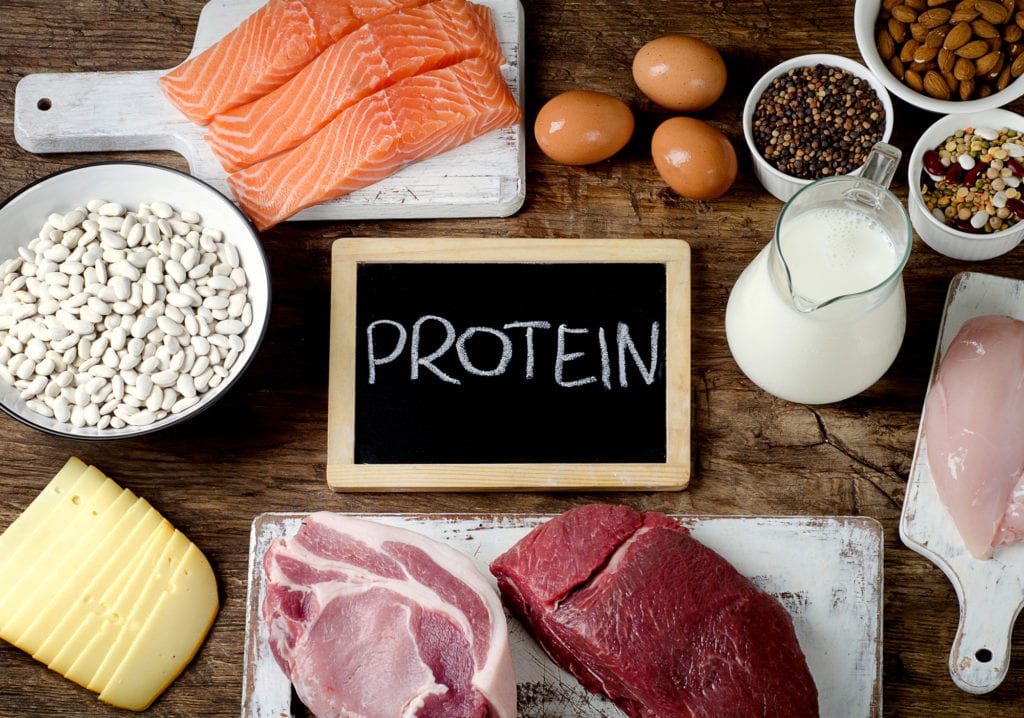
Protein – how much do you need?
Protein is an essential nutrient, vital for numerous functions and structures in the body. In fact it is needed by every cell in our body. Apart from muscle building, recovery and repair after exercise, which most people associate protein with, protein also plays a role in immune health (antibodies are proteins), skin, hair, nails (collagen and keratin are proteins), hormone production, transporting substances throughout the body, bone health, and helps to make enzymes and neurotransmitters. You can see how super important they are, and not meeting your protein needs may mean these important functions are not being carried our properly in the body.
Protein is one of the three macronutrients that are found in the food we eat (fat and carbohydrates being the others). Proteins are made up of amino acids, the building blocks of life. Amino acids are broken down into three categories:
Essential, meaning we must obtain them from the food we eat
Non-essential, those that our bodies are able to make themselves
Conditionally-essential, refers to those that are only required at certain stages in our lives or when we can’t meet the body’s needs, eg, during childhood, pregnancy, as we age, after injury or surgery or in times of stress.
Different foods contain different amounts and combinations of amino acids. As we digest proteins, our bodies break them down into these individual amino acids creating a ‘pool’ of amino acids in our bodies ready for use as and when we need them. The wider the variety of proteins that we eat will provide the biggest pool of amino acids.
In addition to the varying amino acid content, some foods are more bioavailable than others, meaning that our bodies are better able to access the proteins they contain. Animal proteins tend to be more bioavailable and contain all the essential amino acids in the right ratios for us to use. Plant proteins are incomplete and are typically missing one or more amino acid, so vegetarians need to work a little harder to ensure they are meeting their protein needs.
1 gram of protein provides the body with 4 kcal (17 kJ).
How much do we need?
Current guidelines are that we should eat 0.75g protein per kg of body weight per day, so if you weigh 70kg that would be a minimum of 52g protein per day. However this is the minimum requirement to prevent deficiency and typically intakes higher than this is needed. Athletes or anyone who exercises regularly or wants to build muscle will most certainly need more, with requirements more likely at least 1.0g per kg of body weight per day. You should consult with a nutrition specialist for advice particularly if you are a regular gym goer or athlete and have performance goals.
The trick to maximise your body’s protein stores is to eat protein throughout the day rather than your daily intake at one meal. Our bodies essentially have a cap that limits how much protein we can use from any one meal. As a guide, I recommend most people aim to consume 20-30g protein at each meal, plus one or two protein-rich snacks, depending on your body weight and goals.
The following is a guide for protein content of foods:
Protein content of common foods, per 100g unless otherwise stated
- Chicken breast, without skin – 32 g (average breast weighs ~110-150g)
- Turkey breast, grilled – 35g (average breast is weighs ~150g)
- Beef steak, lean grilled – 31g (average steak is weighs ~200g)
- Salmon, grilled ) – 24.6g (small supermarket salmon fillet weighs ~130g each
- Tuna, canned – 24.9g (a small can weighs ~60g)
- Prawns, cooked – 15.4 g
- Eggs – 12g per 100g (there’s around 6g in a large egg)
- Greek yoghurt – 5.7g (a small tub is weighs 170g)
- Whole milk – 3.3g (a cup weighs around 250g)
- Cheddar cheese – 25.4g (an average serving weighs ~30g)
- Cottage cheese – 9.4g (a serving weighs ~60g)
- Parmesan cheese – 36.2g
- Back beans – 6g per 100g of cooked or tinned beans (a can weighs ~ 400g)
- Red lentils – 7.6g
- Quinoa – 13.8 g
- Rice, basmati – 8.1g
- Chickpeas – 8.4g (1 cup cooked = ~15g protein)
- Porridge oats – 10.9g (a serving size weights ~30g)
- Brown bread – 9.4g (a slice weighs ~38g)
- Nuts and seeds (a serving weighs ~30g)
– Almonds – 21.1g; walnuts – 21.1g; hazelnuts – 14.1g
– Pumpkin seeds – 24g; sesame seeds/tahini – 18g; sunflower seeds 19g; chia seeds – 21.2g - Vegetables (a serving size weighs ~ 80g)
– Mushrooms – 9g; broccoli, steamed – 4.1g; curly kale, raw – 3.4g; spinach, baby raw – 2.6g; watercress – 3.0g - Protein powders – most contain around 20-30g protein per serving
The important thing about protein is to make sure you are eating a wide range of proteins spread through the day every day, to maximise your intake of amino acids.
If you would like to know more, please get in touch!
